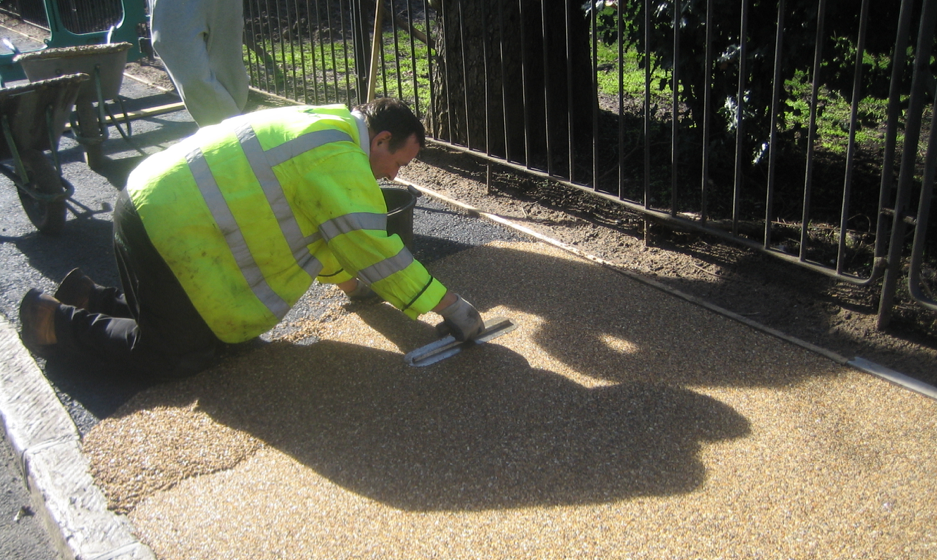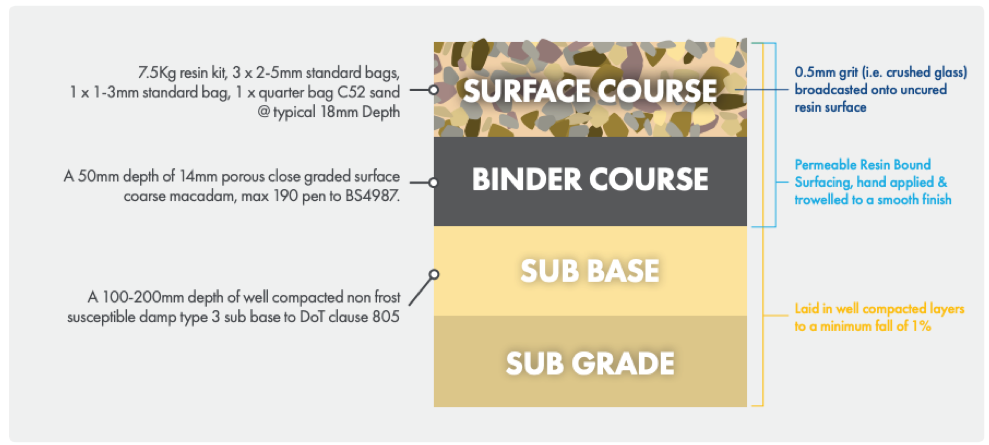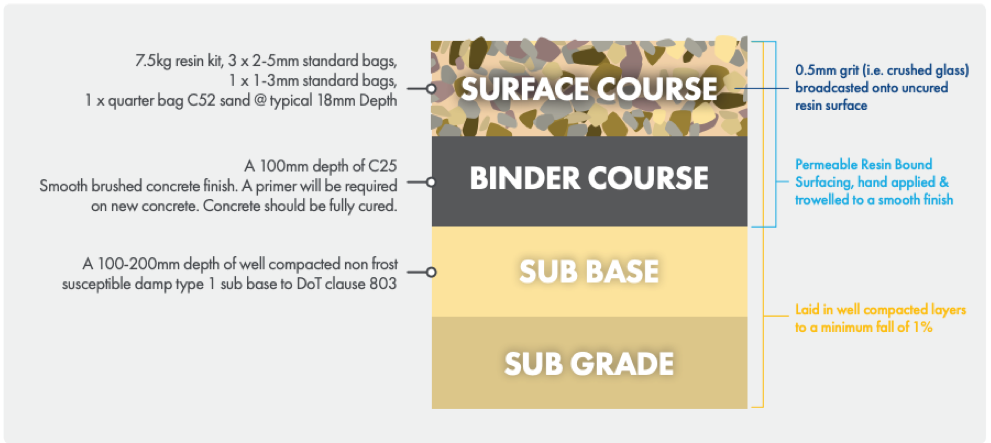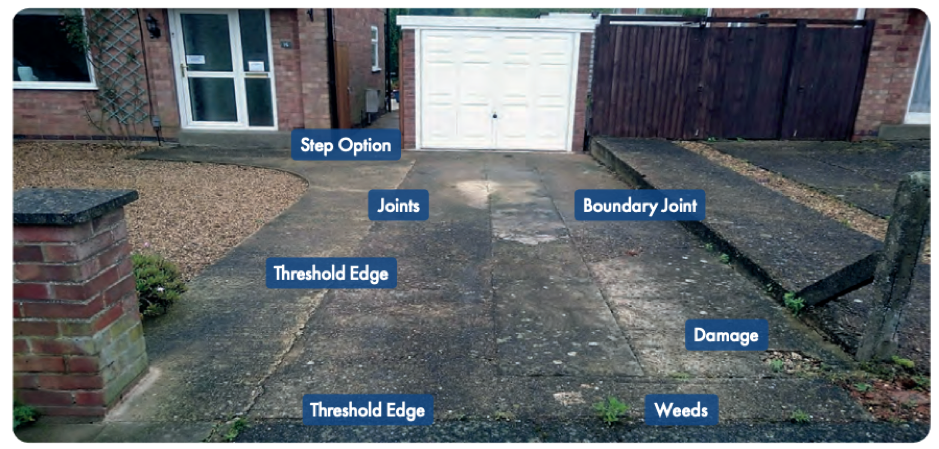Understanding Resin Bound Bases

When installing a resin driveway, having the right base is just as important as the mixing and laying of the system itself.
What is the difference between a base and a sub-base?
There are two key bases involved in a resin bound installation: there is the base and the sub-base. Differentiating between these can be confusing, but each is different and equally as important to understand and get right.
What is the base?
The base is the immediate surface that the resin bound system is laid on and bonds with. This is also known as the ‘binder course’. The term ‘base’ is sometimes used incorrectly to refer to the whole structure beneath the resin bound system (including the sub-base), so it is important to differentiate between them.
What is the sub-base?
As the name suggests, the sub-base of a resin bound surface is the surface that lies underneath the base or ‘binder course’. A good sub-base aids the strength of the overall system and also provides a level working platform for the base.
What is the best sub-base for a resin bound system?
If you are laying a permeable base above your sub-base (such as open course macadam) your sub-base for a resin bound system should be well compacted MOT type 3. If your base is not permeable but has enough of a slope to allow the water to run off into a suitable drain, then MOT type 1 may be used.
In order for a resin bound installation to be SUDS compliant, it must be permeable.
What are the main Resin Bound binder course materials?
The main binder course or base materials recommended for resin bound systems are macadam and concrete. Each has different characteristics and advantages.
The following information looks at a typical base build-up with best practices adhered to.
Resin bound tarmac base
Macadam is a type of construction surface that is formed with successively compacted layers of broken stone, bound with tar or bitumen. Macadam is recommended for a resin bound system that needs to be permeable and SUDS compliant.
The recommended base build-up for a macadam base course includes a 50mm depth of 14mm porous close-graded surface course macadam, max 190 pen to BS4987.

For more information on base requirements, please see our Training Notes.
Resin bound concrete base
Concrete is one of the most widely used building materials in the world. Global concrete usage is actually double that of wood, steel, plastic and aluminium combined.
A concrete base or binder course can be used for a resin bound system; however, be aware that it is not a permeable base and will require additional drainage, and a suitable fall for water to run off into the drainage, in order to comply with SUDS.
The recommended base build-up for a concrete base course includes a 100mm depth of C25 smooth brushed concrete. A primer will also be required on new concrete and the concrete should be fully cured before the resin bound driveway is installed.

For more information on base requirements, please see our Training Notes.
Please Note
The details given above are intended only as a guide. Actual details should be developed by the project designers taking into account the specific circumstances of the intended application. Derbyshire Specialist Aggregates assumes no responsibility for improper reliance upon or misuse of the data herein. Product design and specification are subject to change with further notice.
Is the existing driveway base suitable for Resin Bound?

If you are laying a new resin bound surface on an existing base or binder course, there are some important things you need to check first. These include:
- Are there any steps that require detail?
- Are there any cracks in the base? These will need to be fixed using a cross-layer membrane.
- Badly damaged areas will need to be removed to a minimum depth of 200mm and reinstated with 100mm type 1 MOT hardcore and 100mm of concrete.
- If there is a boundary, be sure to install an edge. If a boundary is removed, it can damage the resin bound surface.
- Do you require edging detail? If so, block or concrete kerbing should be set to protrude 18mm above the existing base edge.
- Any expansion joints should be carried through to the surface of a DALTEX UVR system.
- Make sure the base is cleaned thoroughly with a power wash, with all debris and organic material removed.
- The surface must be completely dry prior to laying the resin bound surface. Water and resin do not mix.
Looking for more Resin Bound information?
This is a quick and digestible guide to help you better understand resin bound base materials. For a more comprehensive guide, covering all aspects of resin bound installation, please read our complete resin bound training notes.
